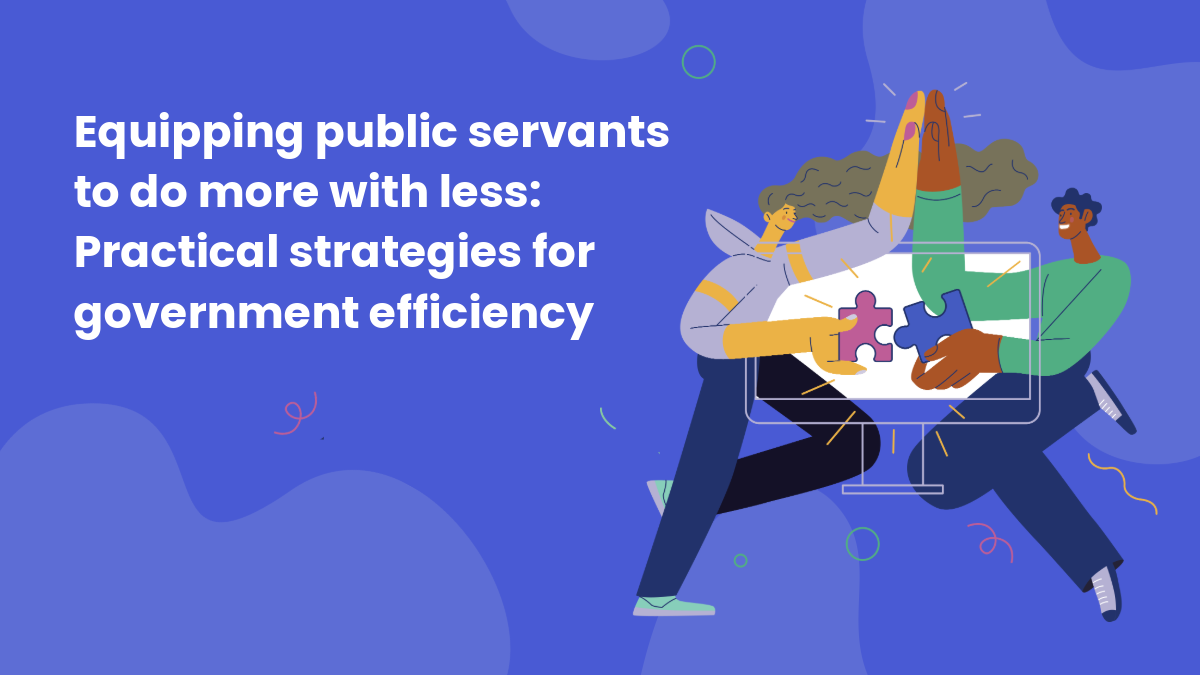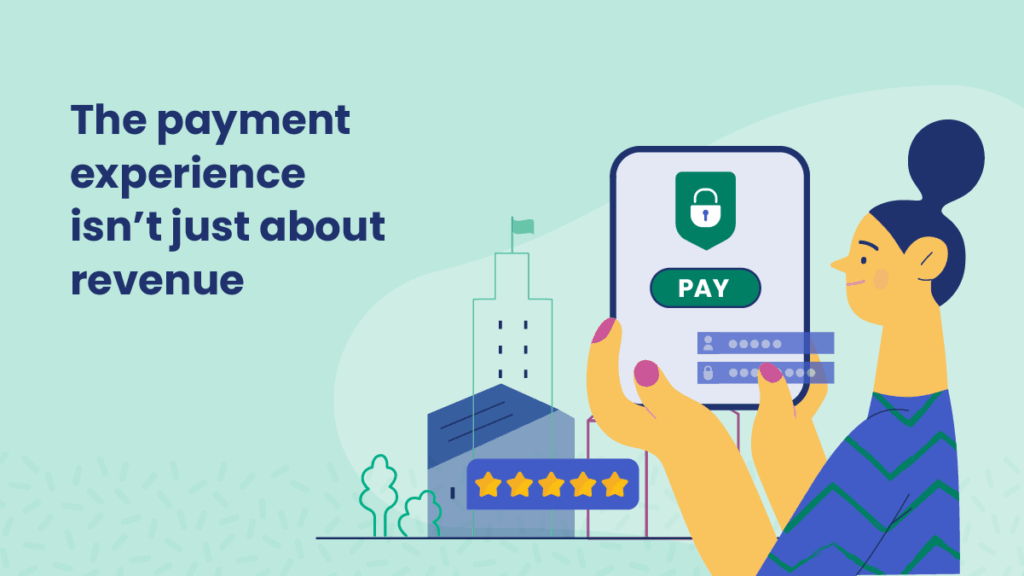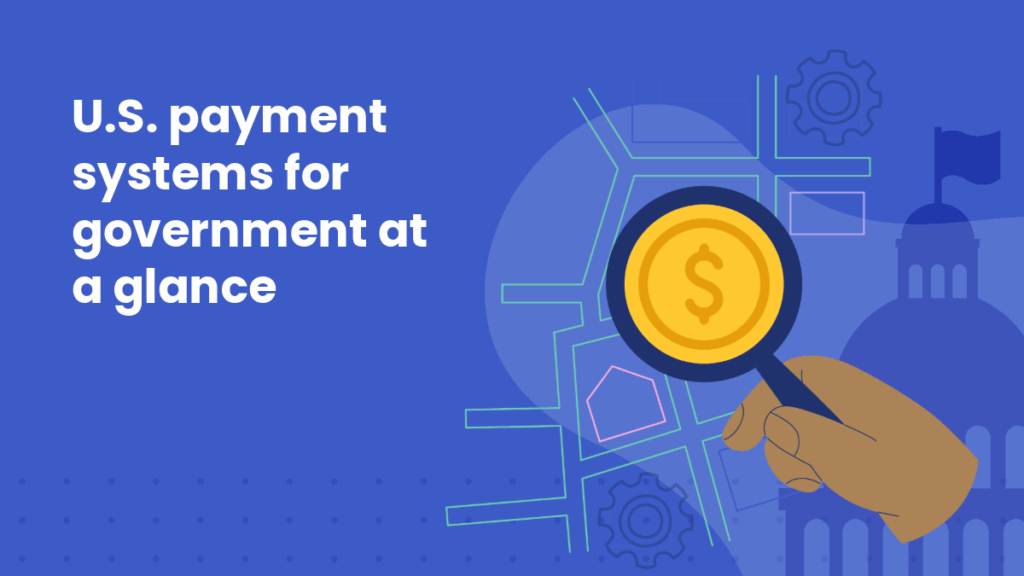Government efficiency: Practical strategies to do more with less

Within state and local agencies, government efficiency isn’t a mere buzzword — it’s a day-to-day necessity. Leaders have been tasked with delivering high-quality, personalized services to residents while operating under tighter budgets, increasing demands, and evolving expectations.
Our recent webinar, The Efficiency Playbook, explored solutions with several government leaders:
- Kim Archuletta, Treasurer & Public Trustee, Pueblo County, CO
- Dr. Shelley Kneuvean, CFO, Wyandotte County, KS Unified Government
- Chelsea Miller, Treasurer, Columbia, MO
- Jack Laskowitz, VP Revenue Management, PayIt
We found that the path to doing more with less is paved with practical, people-centered strategies that can be implemented today.
The best options are often the simplest ones.
1. Spot opportunities by stepping into the residents’ shoes
Efficiency begins with seeing the experience as the public does. Panelists emphasized that while data can reveal overarching trends, firsthand observation of systems often uncovers low-hanging fruit.
- Experience the process yourself: Dr. Shelley Kneuvean visited DMV offices and courthouse dropboxes in her jurisdiction and found that solutions as simple as printed checklists and coloring sheets solved problems her constituents were facing.
- Listen to staff and constituents: People who experience these systems daily know firsthand what’s not working — and what is. Implementing feedback is an integral step in optimizing processes.
- Challenge the way it’s “always been done:” Many inefficiencies arise because people don’t know that another way is possible — or assume existing systems can’t do more. Thinking outside the box may lead to unexpected solutions.
Key takeaway: Pair qualitative observation with measurable data to uncover opportunities that matter most.
2. Rally teams by replacing apprehension with collaboration
Even the best efficiency ideas fail without buy-in. For Kim Archuletta, whose staff was still counting cash by hand when she took office, change wasn’t optional — it was overdue. But pushing change without inclusion can backfire.
- Make staff part of the solution: Invite ideas before implementation, turning fear of the unknown into excitement for what’s to come.
- Connect changes to shared goals: Ensure clarity in how each shift will help make life easier for staff and residents alike.
- Communicate the vision: Dr. Shelley Kneuvean emphasizes that highlighting the why (not just the what) can make changes feel like an evolution towards the future, not a critique of past work.
Key takeaway: Involve people early, communicate reasons clearly, and frame efficiency as a win for everyone.
3. Measure what matters, then share the wins
As Chelsea Miller puts it, “What gets measured gets managed.” Solutions should be consistently tracked with clear data points to reveal both inefficiencies and wins.
- Set a baseline and track both sides: Having a control group is essential — for example, if you’re implementing digital processes, track manual payments, too, to see the big picture.
- Use regular check-ins: Setting calendar reminders for quarterly lookbacks can prevent projects from stalling.
- Tie improvements to real-world impact: When the data reveals big wins, share them! In Kim Archuletta’s district, moving to a lockbox payment system increased interest earnings by $1 million — an easy improvement to share with constituents.
4. Embrace pilots, pivot quickly, and know when to move on
Not every change will work perfectly, and that’s okay — creativity is an iterative but essential process to unlocking big wins.
- Pilot programs lower risk: Shelley Kneuvean’s tag renewal pilot lets her team test and adjust DMV solutions before implementing more widely. Sometimes, it can be best to start projects on a small scale and expand when things are working well.
- Learn without blame: Chelsea Miller’s “lessons learned” sessions help staff focus on the knowledge gained from their experiences without finger-pointing.
- Avoid diminishing returns: It can be easy to continue working on projects until they seem “perfect.” But when data shows that the expended resources don’t match the results, moving to the next high-impact opportunity may be best.
Key takeaway: Treat efficiency as an ongoing cycle of testing and learning — not a one-time project.
5. Build partnerships that last
Efficiency gains can be lost when partnerships falter. Kim Archuletta advises looking for vendors who share your vision and have the drive to grow alongside you — far beyond what’s written on a contract. A true partner brings new ideas to the table, responds with enthusiasm, and works with you to meet your constituency’s evolving, dynamic needs.
Final thoughts
Government efficiency isn’t just about saving money. It’s about creating conditions that allow public servants to do more of what they do best — whether it’s by assessing resident experience, rallying teams, measuring progress, embracing new changes, or building strategic partnerships.
As Jack Laskowitz, PayIt VP of Revenue Management, summed up: “It’s not just about being stewards of funds, but stewards of people that serve people.”
Looking for more content?
Get articles and insights from our monthly newsletter.




